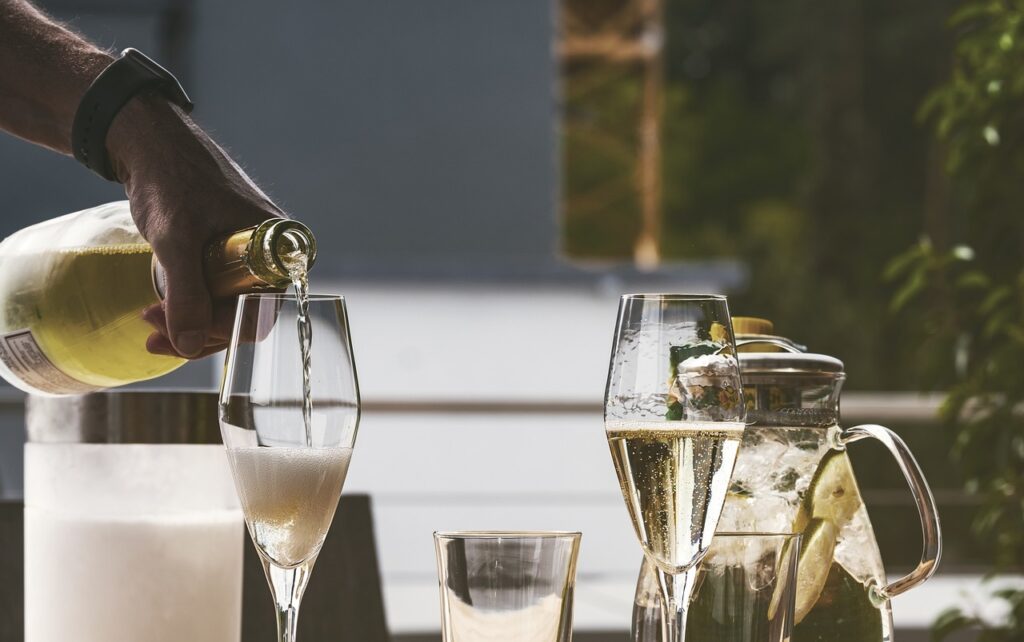The landscape of the beverage alcohol industry is in a perpetual state of transformation, driven by the constant efforts of producers and distributors to provide specialized products tailored to meet the evolving preferences of customers across various segments. As we look towards 2024, the industry remains dynamic, with key players striving to stay ahead of the curve in understanding and addressing the changing landscape.
In navigating this dynamic environment, decision-makers within the industry are keen on adopting a data-driven approach. However, the challenge lies in finding the right balance of data, as both an excess and a shortage can impede the identification of specific consumer behaviour patterns and the anticipation of emerging trends. Brands committed to delivering enhanced value to their customers are actively engaging with the available data, seeking to gain deeper insights into what the future holds for the beverage alcohol industry.
Against this backdrop, this guide aims to delve into the existing data, offering a comprehensive exploration of the anticipated alcohol trends set to shape the industry in 2024 and beyond. By examining consumer preferences, market dynamics, and emerging patterns, this guide seeks to provide valuable insights for industry stakeholders, enabling them to make informed decisions and align their strategies with the evolving demands of the market.
The year marks a significant turning point for the alcoholic beverages sector in India, especially in the realm of premium offerings. The discerning Indian consumer’s taste is undergoing a notable transformation, leading to a surge in demand for top-quality, artisanal spirits. This shift signals a departure from traditional choices, reflecting a preference for a more refined and sophisticated drinking experience.
Key drivers behind this trend include increasing urbanization, a growing middle class with higher disposable income, and evolving consumer preferences favouring more sophisticated drinking experiences. The impact of social media and the influence of international travel have also played a role in elevating consumer expectations, particularly for high-end and luxury alcohol brands.
As a result, several renowned international alcoholic beverage brands have entered the Indian market, introducing their premium and luxury products. Some of these brands have even tailored India-specific versions to cater to the distinct tastes and preferences of the Indian consumer base.
The revival of artisanal production methods and meticulous craftsmanship is proving to be a significant advantage for premium spirits, with Indian distilleries mirroring global trends by emphasizing the importance of small-batch manufacturing, premium ingredients, and careful craftsmanship. Consumers are increasingly attracted to the authenticity and uniqueness inherent in artisanal spirits, whether it be a small-batch gin infused with exotic botanicals or a meticulously aged single malt whisky.
According to a study by the International Wine & Spirit Research (IWSR), younger consumers exhibit a greater willingness to explore novel products and opt for premium, high-quality beverages. Additionally, there is a notable shift towards healthier choices and beverages with lower alcohol content, such as the growing popularity of non-alcoholic beer and hard seltzers among this demographic.
An anticipated trend in the alcohol industry for 2023 foresees a shift among consumers towards spirits, driven by a desire for experiences that introduce them to innovative cocktails. Brands are tasked with striking a delicate balance, offering novelty without being overly unconventional or intimidating. The challenge lies in creating new spirits that are both distinct and familiar, catering to consumer preferences.
To meet this demand, numerous spirits brands are embracing the botanical and floral trend to craft well-balanced products that offer a sense of novelty and excitement. For instance, flavour experts like Angie Kerns, specializing in flavour profiles for Sensient, highlight the appeal of pairing recognizable yet slightly uncommon flavours, such as tangerine, with emerging and somewhat nostalgic profiles like honeysuckle. This approach aims to make these spirits more approachable to a broader audience of consumers. Interestingly, spirits and Ready-to-Drink (RTD) products encounter similar challenges in meeting evolving flavour preferences.
Globalization has significantly influenced the preferences of Indian consumers, leading to an increasing demand for imported premium spirits driven by exposure to international trends and a desire for exclusivity. The recognition of regionally produced premium spirits has also grown, as these beverages are renowned for showcasing local flavours and traditions.
The heightened preference for luxury alcohol among Indian consumers is a result of both increased spending capacity and exposure to a variety of high-quality alcoholic beverages. This refined taste for premium options has gradually evolved and remains robust due to the accessibility of top-notch alcohol at reasonable prices.
As of 2022, India stands as the world’s leading market for whisky, rum, and brandy, according to the International Wine & Spirits Record. While the global alcoholic beverages market is anticipated to grow at a compound annual growth rate (CAGR) of 1-2% by volume and value, the Indian market is experiencing a remarkable growth rate of 6.8%. This growth is particularly pronounced in premium plus segments, such as whisky, which has witnessed a staggering 61% increase. This surge is fueled by increasing wealth, resilience in smaller towns’ economies, and consumers upgrading to superior brands and emerging luxury categories.
Bottom Line
The upscale spirits market is experiencing robust growth, driven by a confluence of factors including evolving consumer preferences, a renewed focus on craftsmanship, and supportive government policies. This flourishing landscape sets the stage for future expansion and innovation within the industry, as an increasing number of consumers develop a nuanced appreciation for the intricacies of fine spirits and the artistry embedded in their production.
The trend towards premium spirits is not only a testament to changing tastes but also highlights a broader cultural shift towards valuing the quality, craftsmanship, and unique attributes of high-end alcoholic beverages. Anticipating continued prosperity in the premium spirits sector throughout 2023, the industry looks forward to embracing better times ahead. The alignment of consumer preferences, artisanal excellence, and supportive regulatory environments positions the high-end spirits market for sustained growth, offering a toast to the enduring success of this thriving sector in the coming year.




